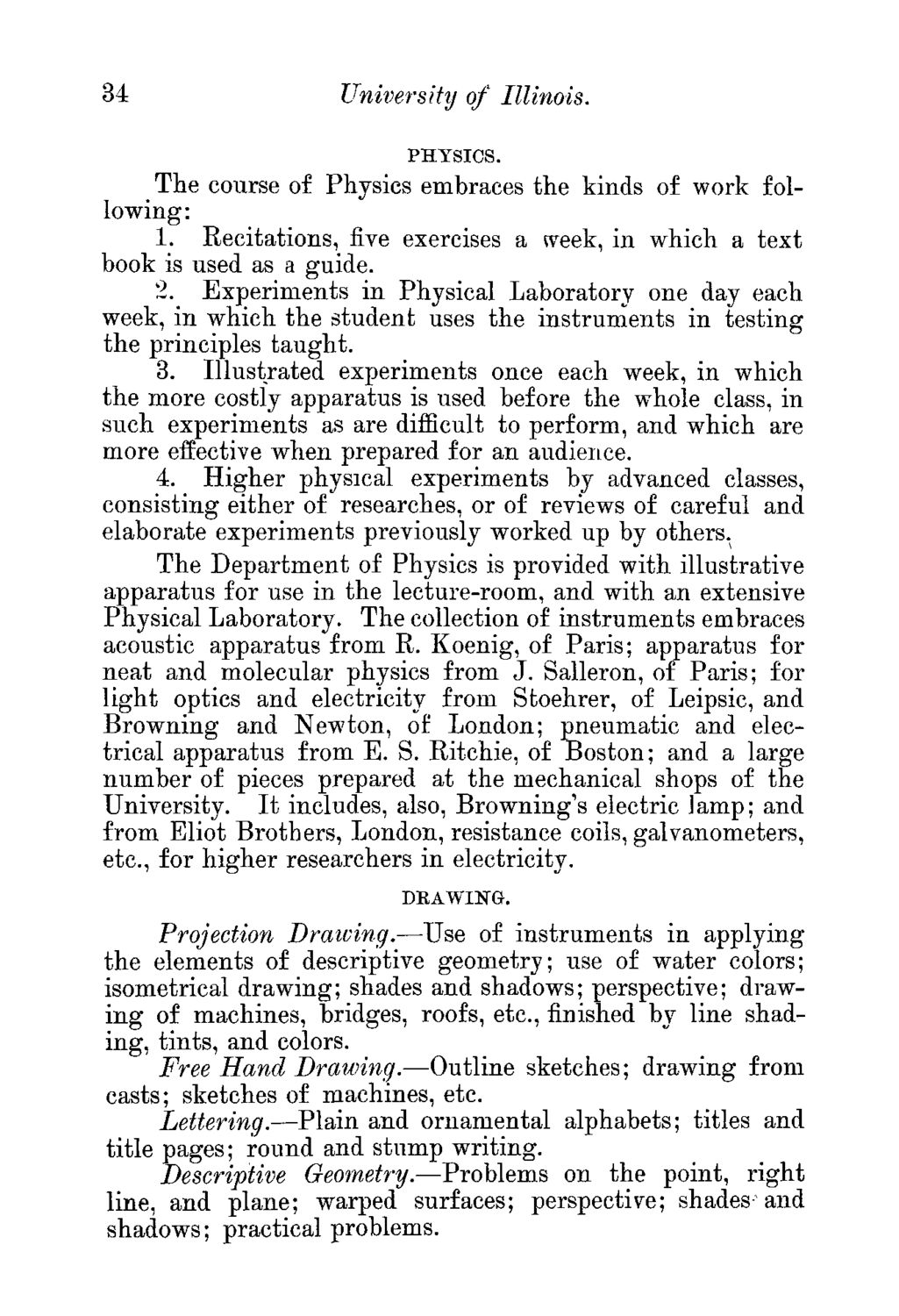| |
| |
Caption: Course Catalog - 1885
This is a reduced-resolution page image for fast online browsing.

EXTRACTED TEXT FROM PAGE:
34 University of Illinois. PHYSICS. The course of Physics embraces the kinds of work following: 1. Recitations, five exercises a week, in which a text book is used as a guide. 2. Experiments in Physical Laboratory one day each week, in which the student uses the instruments in testing the principles taught. 3. Illustrated experiments once each week, in which the more costly apparatus is used before the whole class, in such experiments as are difficult to perform, and which are more effective when prepared for an audience. 4. Higher physical experiments by advanced classes, consisting either of researches, or of reviews of careful and elaborate experiments previously worked up by others. The Department of Physics is provided with illustrative apparatus for use in the lecture-room, and with an extensive Physical Laboratory. The collection of instruments embraces acoustic apparatus from R. Koenig, of Paris; apparatus for neat and molecular physics from J. Salleron, of Paris; for light optics and electricity from Stoehrer, of Leipsic, and Browning and Newton, of London; pneumatic and electrical apparatus from E. S. Ritchie, of Boston; and a large number of pieces prepared at the mechanical shops of the University. It includes, also, Browning's electric lamp; and from Eliot Brothers, London, resistance coils, galvanometers, etc., for higher researchers in electricity. DRAWING. Projection Drawing.—Use of instruments in applying the elements of descriptive geometry; use of water colors; isometrical drawing; shades and shadows; perspective; drawing of machines, bridges, roofs, etc., finished by line shading, tints, and colors. Free Hand Drawing.—Outline sketches; drawing from casts; sketches of machines, etc. Lettering.—Plain and ornamental alphabets; titles and title pages; round and stump writing. Descriptive Geometry.—Problems on the point, right line, and plane; warped surfaces; perspective; shades and shadows; practical problems.
| |